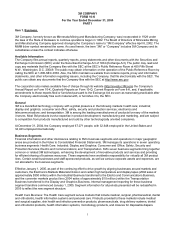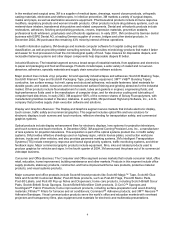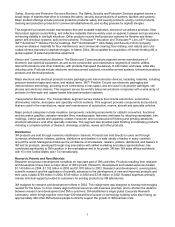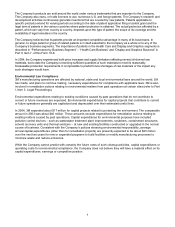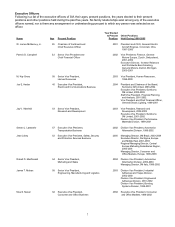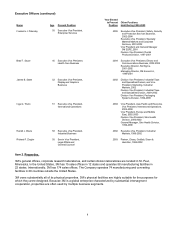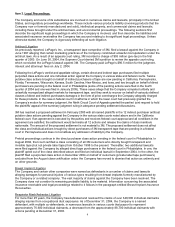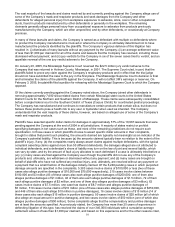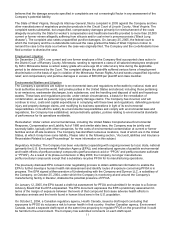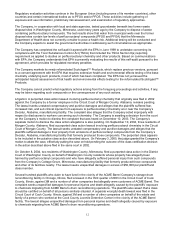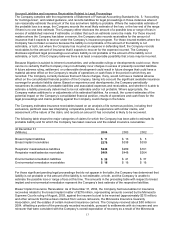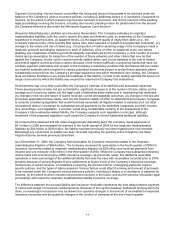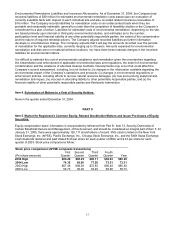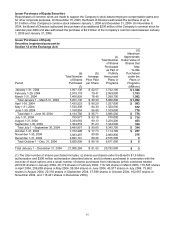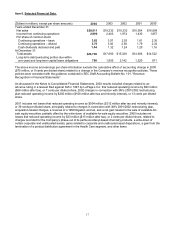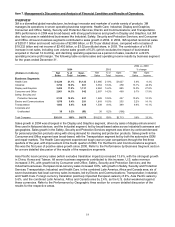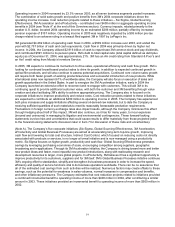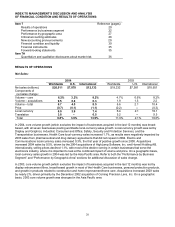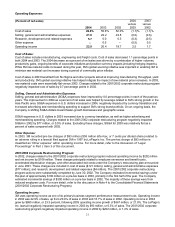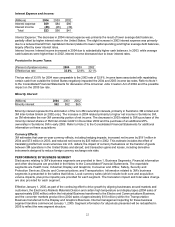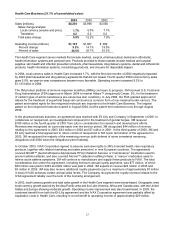3M 2004 Annual Report Download - page 39
Download and view the complete annual report
Please find page 39 of the 2004 3M annual report below. You can navigate through the pages in the report by either clicking on the pages listed below, or by using the keyword search tool below to find specific information within the annual report.
13
Accrued Liabilities and Insurance Receivables Related to Legal Proceedings
The Company complies with the requirements of Statement of Financial Accounting Standards No. 5, “Accounting
for Contingencies”, and related guidance, and records liabilities for legal proceedings in those instances where it
can reasonably estimate the amount of the loss and where liability is probable. Where the reasonable estimate of
the probable loss is a range, the Company records the most likely estimate of the loss, or the low end of the range
if there is no one best estimate. The Company either discloses the amount of a possible loss or range of loss in
excess of established reserves if estimable, or states that such an estimate cannot be made. For those insured
matters where the Company has taken a reserve, the Company also records receivables for the amount of
insurance that it expects to recover under the Company’s insurance program. For those insured matters where the
Company has not taken a reserve because the liability is not probable or the amount of the liability is not
estimable, or both, but where the Company has incurred an expense in defending itself, the Company records
receivables for the amount of insurance that it expects to recover for the expense incurred. The Company
discloses significant legal proceedings even where liability is not probable or the amount of the liability is not
estimable, or both, if the Company believes there is at least a reasonable possibility that a loss may be incurred.
Because litigation is subject to inherent uncertainties, and unfavorable rulings or developments could occur, there
can be no certainty that the Company may not ultimately incur charges in excess of presently recorded liabilities.
A future adverse ruling, settlement, or unfavorable development could result in future charges that could have a
material adverse effect on the Company’s results of operations or cash flows in the period in which they are
recorded. The Company currently believes that such future charges, if any, would not have a material adverse
effect on the consolidated financial position of the Company, taking into account the significant available insurance
coverage for products liability claims. Based on experience and developments, the Company periodically
reexamines its estimates of probable liabilities and associated expenses and receivables, and whether it is able to
estimate a liability previously determined to be not estimable and/or not probable. Where appropriate, the
Company makes additions to or adjustments of its estimated liabilities. As a result, the current estimates of the
potential impact on the Company’s consolidated financial position, results of operations and cash flows for the
legal proceedings and claims pending against the Company could change in the future.
The Company estimates insurance receivables based on an analysis of its numerous policies, including their
exclusions, pertinent case law interpreting comparable policies, its experience with similar claims, and
assessment of the nature of the claim, and records an amount it has concluded is likely to be recovered.
The following table shows the major categories of claims for which the Company has been able to estimate its
probable liability and for which the Company has taken reserves and the related insurance receivables:
At December 31
(Millions) 2004 2003 2002
Breast implant liabilities $ 11 $ 13 $ 5
Breast implant receivables $278 $338 $339
Respirator mask/asbestos liabilities $248 $289 $161
Respirator mask/asbestos receivables $464 $448 $264
Environmental remediation liabilities $ 39 $ 41 $ 37
Environmental remediation receivables $ 16 $ 16 $ 16
For those significant pending legal proceedings that do not appear in the table, the Company has determined that
liability is not probable or the amount of the liability is not estimable, or both, and the Company is unable to
estimate the possible loss or range of loss at this time. The amounts in the preceding table with respect to breast
implant and environmental remediation represent the Company’s best estimate of the respective liabilities.
Breast Implant Insurance Receivables: As of December 31, 2004, the Company had receivables for insurance
recoveries related to the breast implant matter of $278 million, representing amounts covered by the Minnesota
Supreme Court’s ruling of August, 2003, against the insurers but yet to be received (approximately $215 million)
and other amounts that have been claimed from various reinsurers, the Minnesota Insurance Guaranty
Association, and the estates of certain insolvent insurance carriers. The Company received about $50 million in
2004, offsetting a portion of the previously recorded receivable, pursuant to settlements with six insurers and one
reinsurer that were consistent with the Company’s overall expectation of recovery as a result of the Minnesota


